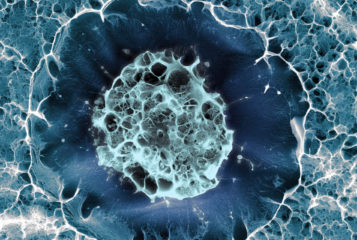A new study has cast doubt over how useful human induced pluripotent stem cells (iPS cells) could be for research and the treatment of degenerative disease. Professor Su-Chun Zhang and colleagues at the University of Wisconsin-Madison School of Medicine, US, found iPS cells were 'significantly' less efficient at differentiating into neurons than embryonic stem cells (ES cells) . The work was published in the journal Proceedings of the National Academy of Sciences (PNAS).
Human iPS cells are generated by introducing four key genes to re-programme adult skin cells back to an embryonic state. They offer two distinct advantages over ES cells: they can be grown from a patient's own tissue, solving the problem of immune rejection, and their creation does not require the destruction of embryos, a practice which some experts and pro-life groups strongly oppose. However, this latest research suggests iPS cells may not, in fact, have the same properties and potential as ES cells, meaning much more work must done before they can be used therapeutically in humans.
Professor Zhang said: 'Embryonic stem cells can pretty much be predicted. Induced cells cannot. That means that at this point there is still some work to be done to generate ideal induced pluripotent stem cells for application'.
The researchers found fundamental differences between the ability of 12 human iPS cell lines and five ES cell lines to differentiate into working neurones, a key attribute if they are to be used as a source of cells to treat chronic brain conditions like Parkinson's and Alzheimer's disease. Crucially, these differences were not eliminated by subsequently removing the four 'transgenes' originally used to create the iPS cells.
The findings come as Californian biotechnology company Geron Corporation is due to begin the first patient trial of an ES cell therapy later this year. In an interview with The Times earlier this week, the company's chief executive, Dr Thomas Okarma, shed doubt on the economic viability of iPS cells. He said that for any cell-based therapy, 'you've got to have something that can be stored and frozen, to provide thousands of doses, each one standardised and as good as the last'.
He further raised the issue of regulation pointing out that, under current European and American law, each fresh set of patient-specific cells would need to be independently approved. ES cells on the other hand, which can be standardised and mass produced, would only need one-off approval, making them a more attractive business proposition.
Sources and References
-
Neural differentiation of human induced pluripotent stem cells follows developmental principles but with variable potency
-
Study raises doubts over stem cell research
-
Medical potential of IPS stem cells exaggerated says world authority
-
Study raises stem cell questions





Leave a Reply
You must be logged in to post a comment.